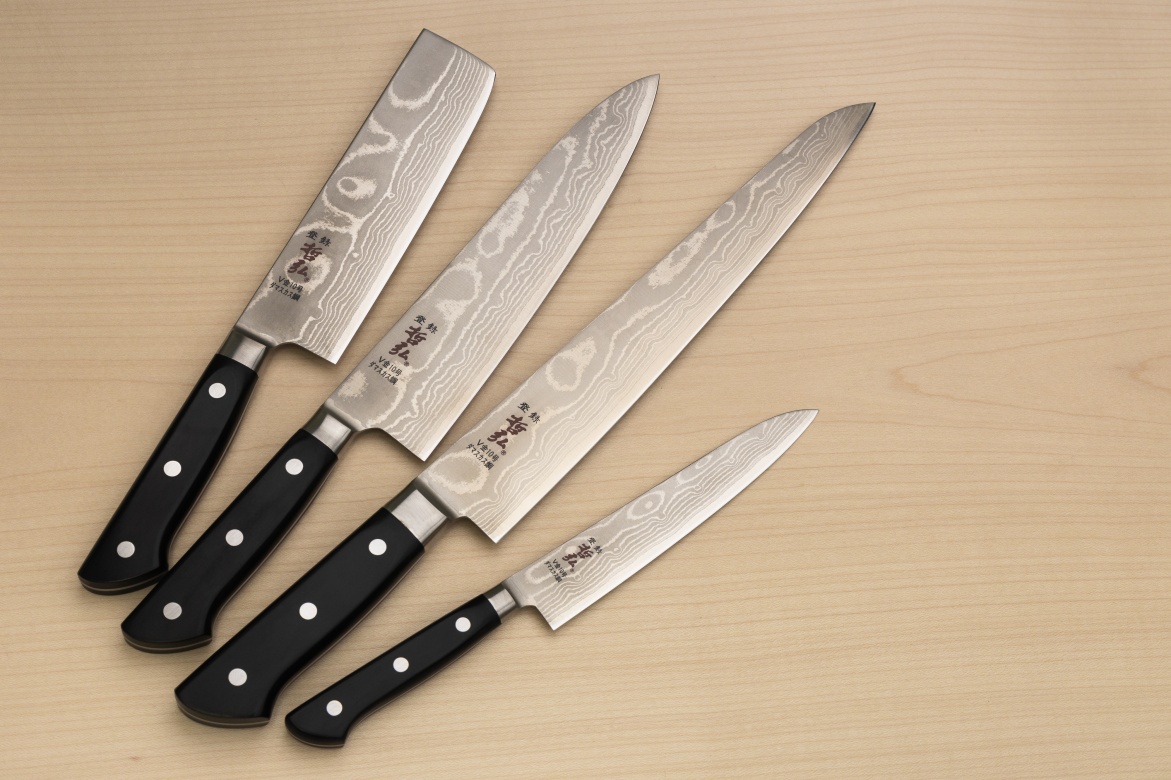Whether you plan to be a chef in a five-star Michelin restaurant or are passionate about cooking for your friends and family, you will need a good set of knives. To that end, if you ask anyone knowledgeable about great kitchen knives, they will tell you that a carbon steel chef knife is a must-own.
If you are new in the games of knives (so to speak), then you must be wondering whether buying a chef knife is as easy as walking into a store and asking for one or there is more to it. Well, as with most things, there is more to it.
In the following lines, we will explain a few things about carbon steel chef knives, what makes them special, and the different types of carbon steel knives.
Carbon Steel Chef Knives 101
As it can be understood from the name, these knives are made by adding carbon to the steel, which is the main foundation. The steel is the base, but the carbon makes all the difference in the world. Typically, any decent knife should feature anywhere between 0.5% and 1.8% carbon. The higher the percentage of carbon within the knife, the sharper the knife will be and more durable.Types of Carbon Steel Knives
There are two main types of carbon steel knives:• White steel carbon knives (White#1 & White#2)
It is the finely grained carbon steel that is the basis for these types of knives. The level of carbon content in it determines whether it is a White#1 or White#2 carbon steel knife. White#1 knife features the highest possible carbon content, which means it has the best possible cutting edge. The downside is that the knife is quite brittle. The White#2 contains less carbon, which means that it’s not that brittle. Hence, most chefs prefer the White#2 type.
• Blue steel carbon knives (Blue#1, Blue#2, Blue Super Steel)
Blue steel is made by adding chromium and tungsten to the iron and the carbon. The result is a knife that can attain its edge longer than a White steel knife. But there's a catch to it; the cutting edge is not as fine as with White steel knives. Blue steel#1 features more carbon than Blue steel#2 and is the sharpest of all. On the other side, Super Blue steel comes with vanadium which improves its wear resistance and offers the longest edge life.
While one is considered more durable and can withstand years of heavy use, the other features a better cutting edge. Let's check out the main differences between these two types.
White steel Vs. Blue Steel Carbon Knives
For decades now, tons of articles have been written on this subject. There are countless videos and even a few podcasts dedicated to it. But there is rarely a clear-cut summary of the matter.The thing that distinguishes these two types is the type of carbon added to the iron. White steel knives are made of fine carbon, which doesn't contain any unnecessary contaminants and compounds. The thing with contaminants and additional compounds is that they can potentially affect the sharpness of the cutting edge. As a result, White steel knives can be as sharp as a razor. That makes them perfect for cutting sashimi, sushi, and many other delicate ingredients. Also, one must know that because of all that, these knives are rather difficult to forge.
Blue steel knives, unlike White steel carbon knives, contain tungsten. Consequently, this type of knife is more reliable than its white counterpart. Their sharpness is not as good as with White steel knives, but at the same time, it is not that far off.



POST COMMENTS
0 COMMENT(S)